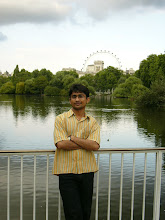By Abdullah Khoso
“I HAVE come,” said the 13-year-old boy before blowing himself up at a security picket at the Urdu Bazaar intersection of Lahore, killing and injuring a number of people last month.
Children in the settled and tribal areas of the northwest are commonly used to carry out suicide attacks in Pakistan. In one case in 2009, the army detained 20 boys from the Swat valley and nearby areas apparently being trained by the Taliban to become informants, fighters and suicide bombers. Eleven among them were as young as seven years. According to a report in the Washington Times, there is a big price tag on child bombers, ranging from $7,000 to $14,000.
In January 2010, the CNN reported that Pakistan`s military had revealed that the former Taliban stronghold of Nawaz Kot, South Waziristan, was used to train Pakistani children between the ages of 12 and 18 years as suicide bombers.
According to the report, the parents of such children send their offspring to school for a better education and free food, whereas written material available there showed details of the preparation of suicide jackets, the handling of weapons and ways to ambush; the walls carried artwork depicting a glorious afterlife for suicide bombers.
In October 2010, in Karachi, the police arrested a 16-year-old `would-be suicide bomber`. The boy told the media that the Taliban had warned him that if he refused to carry out the attack or told anybody about it, they would slit his throat. It was the fear of being slaughtered that led him to agree to carry out the suicide bombing.
Conversely, a 16-year-old boy detained at the Youthful Offenders Industrial School in Karachi believes that the Taliban are good people and are dispensers of justice. The boy was the only survivor of the Saeedabad blast in Karachi in January last year, which took the lives of six people believed to be militants. He was also wounded, and kept in solitary confinement separate from other minors.
The boy believed that the Taliban in his hometown of Miranshah in North Waziristan were killing robbers and murderers. He was a student at a madressah in Karachi, and had received extensive training in North Waziristan. Apparently, afterwards, the boy was given no psychological counselling as he held on to his pro-Taliban views.
In addition to children, the Taliban are also using young women of the tribal areas for such attacks. Last December, a young burka-clad woman carried out a suicide attack at the World Food Programme`s food distribution centre in Bajaur Agency and killed over 40 people. It is believed that she was less than 18 years. It has been learnt that in Swat the Taliban have targeted young women and girls who are socially marginalised and keen to take part in the movement, doing whatever they can including cooking and cleaning.
Local human and child rights activists of the area believe that the Taliban are working in an organised manner and have easily influenced women through sermons on the radio. Besides social deprivation and the lack of proper religious education, illiteracy has been reported as a major factor that has contributed to the growing numbers of children and women falling prey to the Taliban. Beyond Madressahs: Assessing the Links between Education and Militancy in Pakistan
The analysis in a 2010 report by the Brookings Institute and titled , has shown strong linkages between education and civil conflict. The report states that the lower the enrolment rates at the primary and secondary levels the more likelihood there is of the eruption of conflict in the country.
The phenomenon of suicide bombers including child suicide bombers striking in Fata and the rest of Pakistan has its roots in the draconian Frontier Crimes Regulation (FCR) 1901 which is applied in the tribal areas. Even the Supreme Court of Pakistan has abandoned interventions to stop human rights violations in Fata which are perceived as being committed under the FCR.
The FCR has not regulated the lives of the tribal people and, in fact, has brought miseries to the lives of innocent women and children under the collective responsibility clause. The actual culprits remain free. Consequently, a big administrative, economic and political vacuum exists, one which has never been filled for decades and thus serves the interests of terrorist groups which neither the judiciary nor the police nor any other agency has been able to bring to justice because of constitutional restrictions.
With much of Fata controlled by militant groups, there is increasing lawlessness and poverty in the region and a greater chance of young people, including adolescents and children, joining militants groups and engaging in armed combat and suicide attacks.
The uprooting of the seeds of extremism sown by these terrorist groups is a long-term agenda but one that is indispensable to the survival of the country. Only through bringing the rule of law to Fata and repealing the FCR immediately can this agenda be implemented.
Meanwhile, there is a pressing need to reverse the damage done to thousands of children who are both victims and agents of the Taliban, many being programmed to commit acts of terrorism.
Children in the custody of the military and police should be given social support, education and other services resulting in their reintegration into society. A strategic national policy is required to prevent children from falling into the hands of militants.
The writer works for the Society for the Protection of the Rights of the Child.
http://www.dawn.com/2011/02/19/easy-prey-for-the-taliban.html
Saturday, February 19, 2011
Subscribe to:
Comments (Atom)
